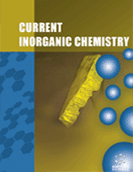Abstract
The preparation of 2-pyridyl cyanoxime (hereafter referred to as H(2PCO)), along with several metal complexes, is described in detail. The cyanoxime was investigated in solutions, and its two protonation constants were measured spectrophotometrically following a significant shift of the compound’s π→π* transitions at 208 and 280 nm. The first, with pK1=1.81(9), corresponds to proton release from the pyridine moiety, and the second, pK2=6.77(1), corresponds to a proton release from the hydroxyimino group. The H(2PCO) in solution easily deprotonates to form a yellow conjugated anion, which demonstrates significant solvatochromism in solutions: the bathochromic shift of n→π* band for 2PCO- in methanol (MeOH) and dimethylformamide (DFM) is 90 nm, which is one of the highest on record for cyanoximes. The crystal structures of the free ligand, H(2PCO); its ionic derivative, PPh4(2PCO); and its divalent complexes, [Ni(2PCO)2·2H2O], [Ni{2PCO}2(H2O)}2], mer-PPh4[Ni(2PCO)3]·2H2O, and mer-AsPh4[Fe(2PCO)3], were determined. The protonated cyanoxime H(2PCO) and as anion in transition metal complexes adopt cis-anti configuration and act as bidentate-chelate or tridentate (chelate + bridging mode) ligand. Data from the 57Fe Mössbauer spectroscopy indicated that the “AsPh4[Fe(2PCO)3]” sample comprised of 85-88% low-spin Fe(II) compound state with small value of the QS, and 12-15% Fe2+ compound being in high-spin state. The major component corresponds to the mer-isomer, while the high-spin component is suggested for the [Fe(2PCO)2·2H2O] complex. The formation constants in the H(2PCO) – Fe2+ system were measured using UV-visible spectroscopy and showed that the intensely colored [Fe(2PCO)3]- anionic complex (λmax=533 nm) has Kf= 11.09. This finding is the second highest established for colored iron(II) complexes after [Fe(phen)3]2+ cationic compound that is traditionally used in analytical chemistry.
Keywords: Cyanoximes of pyridine, Mössbauer spectroscopy, stability constants, UV-visible spectroscopy, X-ray analysis.
Graphical Abstract
 16
16

